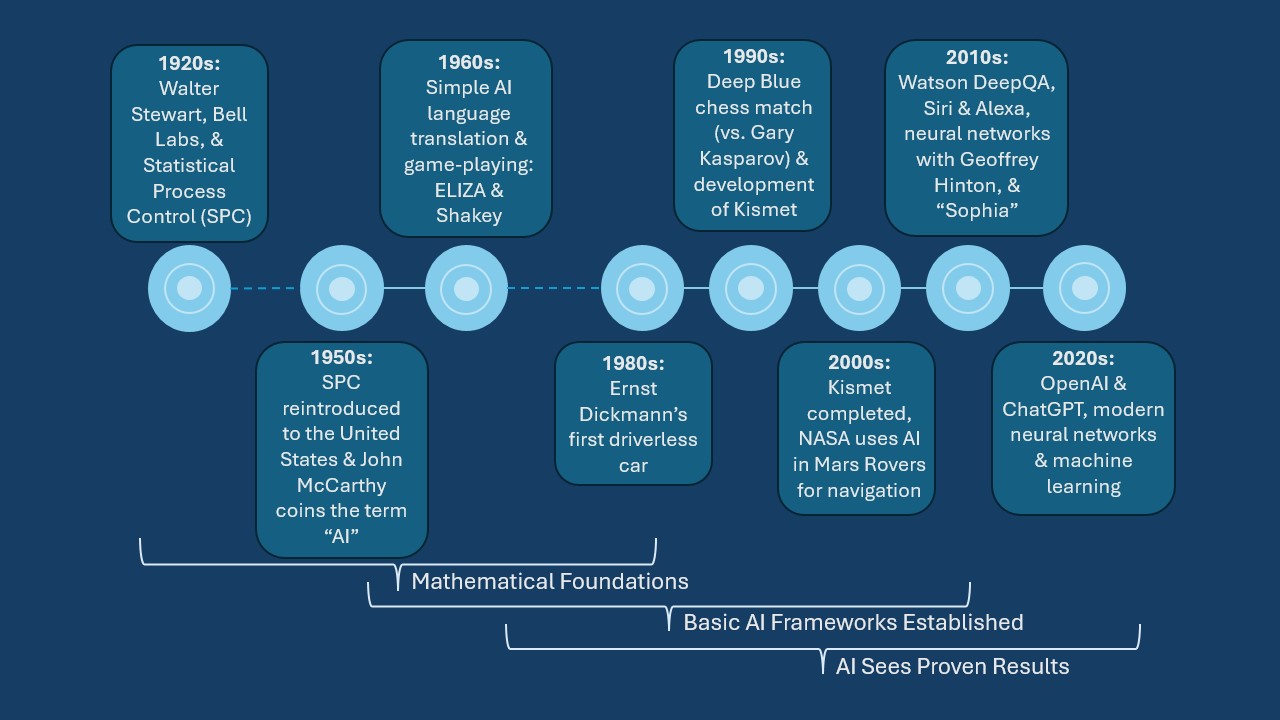AI is Not New

By Brian Lindenmeyer
The first chatbot was developed in the 70s; even at a rudimentary level, that’s 70 years of research and AI. With further background development predating that in the 1920s with Bell Laboratories and Walter Stewart’s Statistical Process Control, over 100 years of advancements have contributed to creating the current AI landscape. The first neural networks or machine learning applications were developed in the 90s–early 2000s, 30 years ago now, and the first machine learning global event was IBM’s Deep Blue winning against the world chess champion, 1997. With all this in mind, it’s hard for me to say or agree with anyone who claims that AI is an entirely new, unexpected invention.

I look at it this way: in the 2010s, I talked about “Big Data,” as that was where companies began looking to pool data for better operations. Big Data is AI in another form, known by another name, without the hardware to support it: cloud computing.
Back in 2012, TransVoyant figured out that big data and cloud computing could be tied together into a scalable platform. We did so, building algorithms to perform analysis in hours, minutes, or seconds rather than days, weeks, and months. The Machine takes this analysis and applies it to processes, adding external context for a comprehensive view on both what matters in the data and why. Once you have the why, you can make changes and get your processes back on track.
Take health and lifestyle tracking as an example. Say you want to keep track of your daily sleep, calorie intake, and exercise. I use an Aura ring now as an overall health and fitness tracker, but I used to track my sleep through logging the food I ate to manually count calories, or my exercise routine. If something was off for a day or two, I had to go back in the data and figure out where the inconsistencies were and how I could fix them before I lost track of my health entirely.
The thing is, this process has its flaws. It doesn’t actually track whether I exercise in the context of external factors like heat outside, which can drastically affect performance and exertion, or if the AC went out in my house one night and I had to skip sleep while waiting for repairs. In the same way, if the health of your supply chain is based on averages and not events in context, your processes aren’t actually measuring your information, but what’s wrong with it.
The ability to measure your information and show the deviation from your targets is what supply chain decision intelligence has brought to the table. It ties your internal finance or business data to echo system data (your partners and proprietary), and to external data. It’s not new, it’s something that’s been on the rise since the 1920s with Walter Stewart’s Statistical Process Control, and it’s what we’ve been doing here at TransVoyant since 2012.



